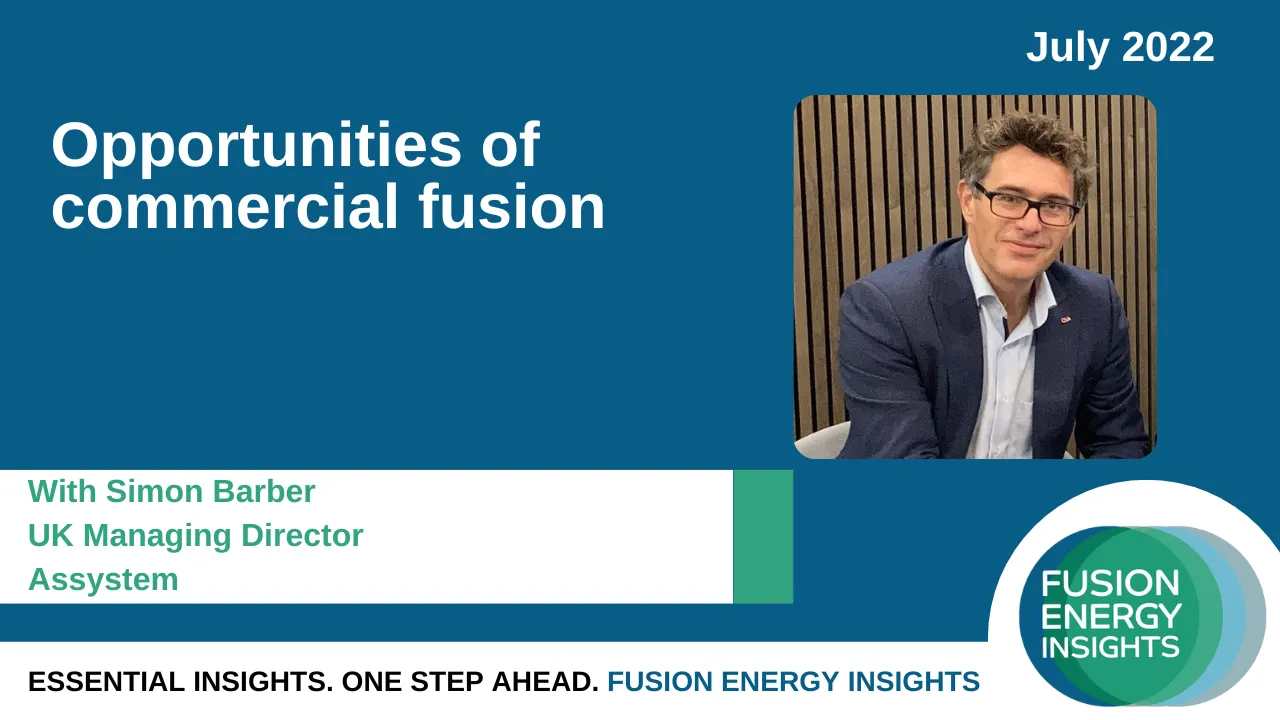Opportunities of Commercial Fusion
Simon Barber, UK managing director of Assystem has over 27 years of experience in the UK nuclear sector working across new build, defence and power networks, including long spells at British Energy, Atkins, and more recently Arup. Simon became Assystem’s UK Managing Director in 2020, bringing his depth of knowledge in the UK nuclear sector to drive the second largest nuclear company in the world forward during Britain’s nuclear renaissance. Assystem has extended its specialist capabilities in recent years to support the development of fusion energy technology and is actively involved in multiple projects including JET, DEMO, ITER and STEP.

Here are three insights taken from the event:
1. Addressing the challenges will drive innovation and learning, with particular opportunities in AI and digital tools
There are materials problems around the world that are at the heart of how we move to net zero. For example, in the automotive industry the move towards EVs globally is pushing advances in battery technology.
In fusion, there's a significant amount of materials challenges, in particular around the magnets and the divertor—how you take heat out of the tokamak or other fusion device. These may require some exotic materials.
Simon Barber: “I think there's a key piece around the use of AI and digital tools to really drive the pace of innovation and learning in how we can simulate material behaviours—and understanding whether or not they’ll be suitable far sooner than we can in the current world where it's very much around practical experiments.”
2. Early opportunities in fusion will be for very specialist companies, broadening out later
Simon Barber: “At the moment it's such a specialist area; it really is at the forefront of R&D.”
Giant strides are being made in things like magnet development, but it's very specialist SMEs and academia. Simon believes the transition into other companies comes when you're into design and delivery mode.
“At Assystem, for example, we're not going to develop large magnet R&D capabilities within the business, but we will get involved in terms of the systems integration and how you develop those systems into an overall functioning fusion device.”
3. There is the chance to be a global leader & there will be economic spillovers
The 2021 Assystem/IMechE report looks at looks at fusion—a global effort—and distils the opportunity into what it might mean for the UK. It tries to predict what a commercial fusion market could look like in the mid 21st century. It's got a UK focus, and it’s got a supply chain focus to see how how fusion could be developed in the UK.
But it’s more broadly relevant to a number of other countries around the world. The opportunities are the same. The whole purpose was to assess the state of play of fusion to understand the pathway to commercialisation.
Right now, countries like the UK and the US have the opportunity to be a prime mover in commercialising fusion, which opens up the world as a potential market. And, similarly to the Apollo missions in the US in the late 1960s, there are great potential economic spillovers into other high tech sectors, particularly around materials, robotics, automation and digitalisation.
Here is the link to Assystem report - https://www.assystem.com/en/fusion-energy-report/
